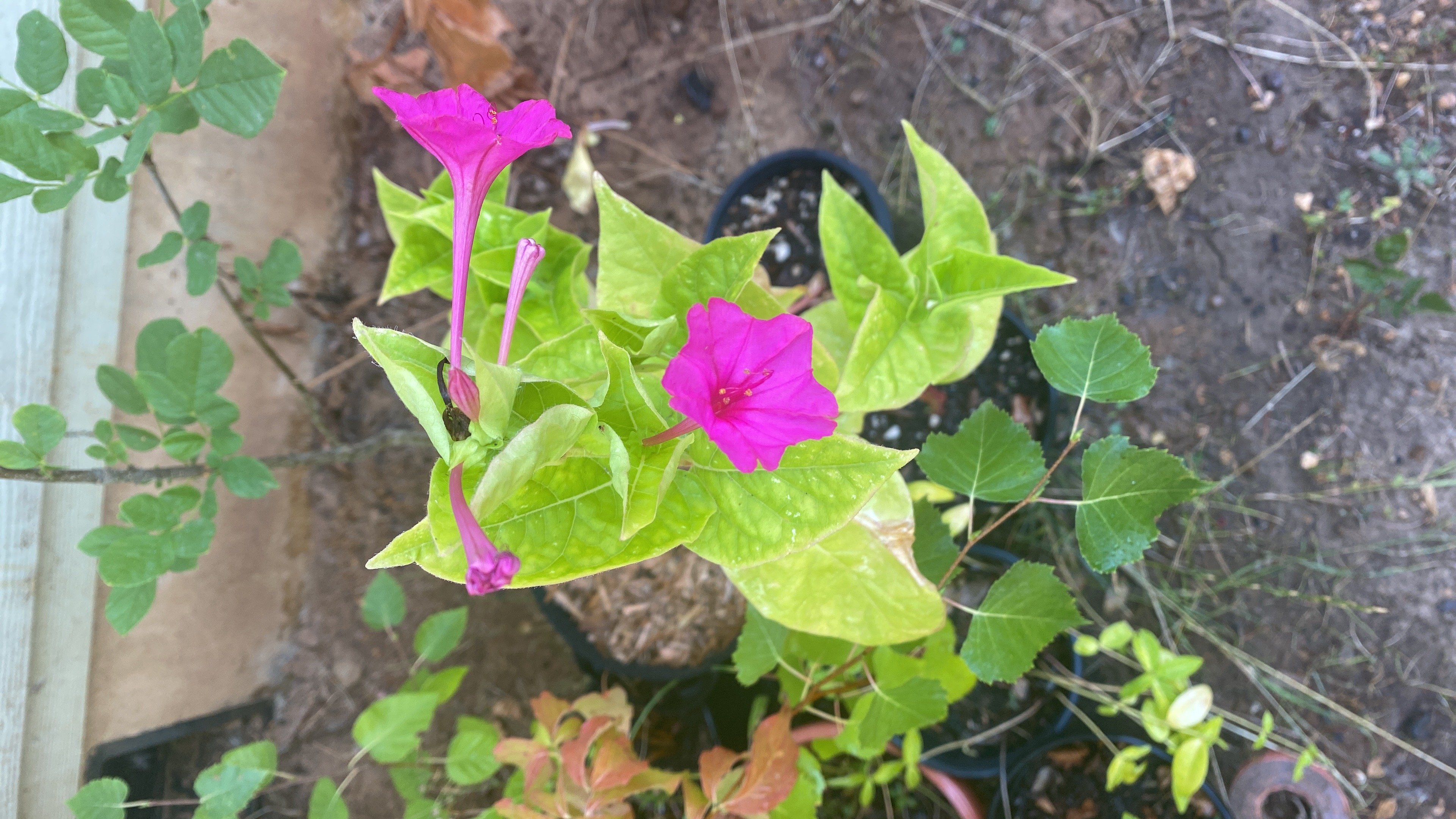Here’s a gray-area plant that I recently received as a gift. Hastily handed to me, bareroot, after sitting in a hot car for a few hours, they were barely hanging on. I plopped them in pots, watered them well, and set them in a mostly shady area (~4 hrs of afternoon sun). The gifter had no idea what they were.
After about 2 weeks of life support they’ve now bloomed and revealed themselves to be Sweet Four O’Clocks (Mirabilis longiflora) native to the Southwest of the US and northern Mexico. A preliminary “is this invasive” search led me to find that they are not, but they’re closely related to Wild Four O’Clocks (Mirabilis nyctaginea) which are on the WA state noxious weed list.
They grow 4-5’ tall and wide and prefer loose and loamy soil (ha) and fairly consistent moisture. They supposedly bloom in the afternoon through morning and are always bright and cheery first thing in the morning when I rush out to water my pots before scrambling to work.
For the next few weeks they’ll be staying in pots and once our new patio cover is done I’ll probably plant them along the posts. That way I can keep on eye on them for bloom times, pollinator activity, and seeding/spreading aggression. We’ll see how they hold up to our northern climate. With their trumpet-shaped flowers, I suspect the hummingbirds will be thrilled if they thrive.





